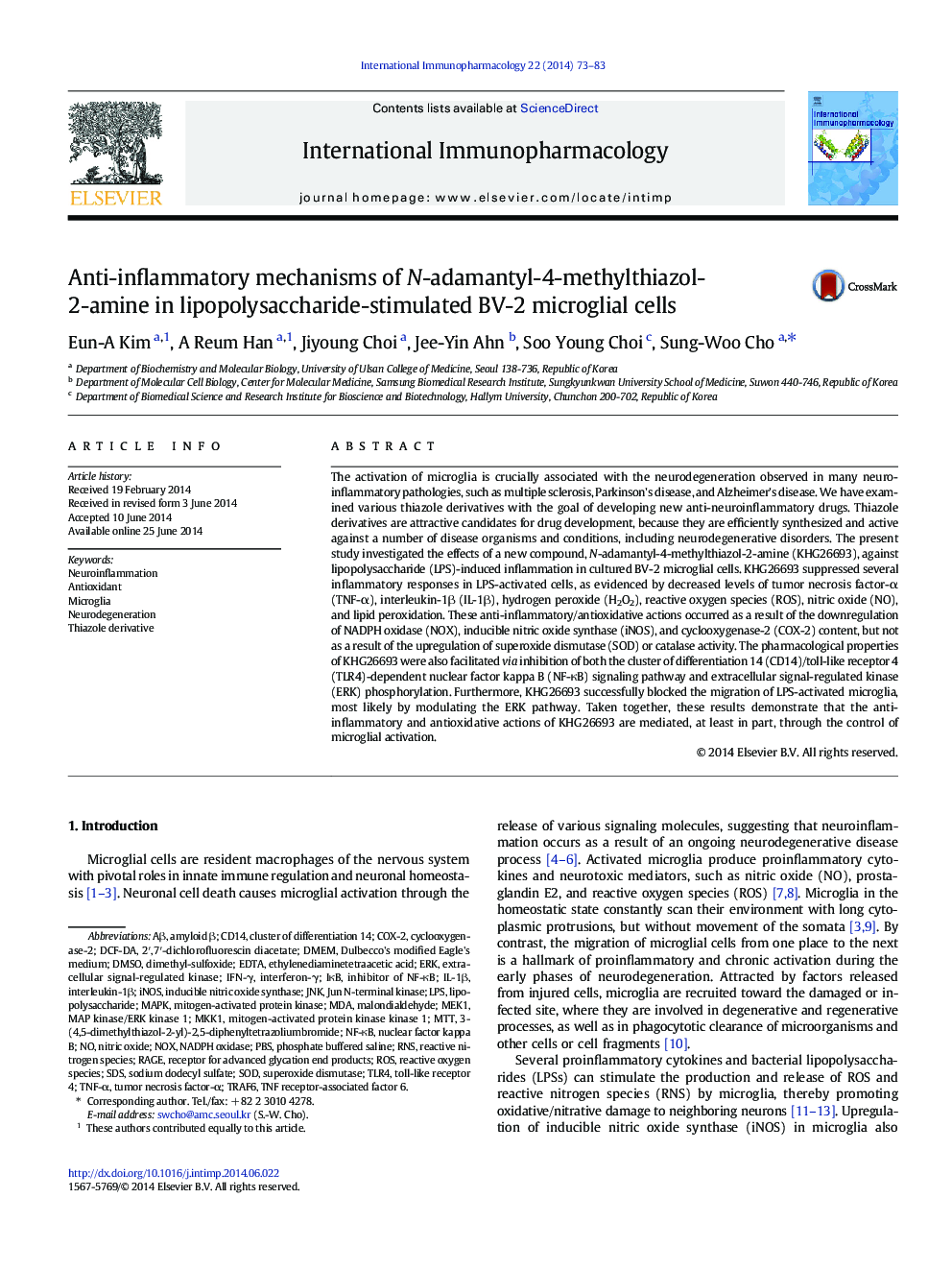| کد مقاله | کد نشریه | سال انتشار | مقاله انگلیسی | نسخه تمام متن |
|---|---|---|---|---|
| 2540617 | 1122601 | 2014 | 11 صفحه PDF | دانلود رایگان |

• KHG26693 decreased levels of TNF-α and IL-1β.
• KHG26693 decreased production of ROS, NO, and lipid peroxidation.
• KHG26693 downregulated NOX, iNOS, and COX-2.
• KHG26693 inhibited CD14/TLR4-dependent NF-κB and ERK phosphorylation.
• KHG26693 blocked the migration of LPS-activated microglia.
The activation of microglia is crucially associated with the neurodegeneration observed in many neuroinflammatory pathologies, such as multiple sclerosis, Parkinson's disease, and Alzheimer's disease. We have examined various thiazole derivatives with the goal of developing new anti-neuroinflammatory drugs. Thiazole derivatives are attractive candidates for drug development, because they are efficiently synthesized and active against a number of disease organisms and conditions, including neurodegenerative disorders. The present study investigated the effects of a new compound, N-adamantyl-4-methylthiazol-2-amine (KHG26693), against lipopolysaccharide (LPS)-induced inflammation in cultured BV-2 microglial cells. KHG26693 suppressed several inflammatory responses in LPS-activated cells, as evidenced by decreased levels of tumor necrosis factor-α (TNF-α), interleukin-1β (IL-1β), hydrogen peroxide (H2O2), reactive oxygen species (ROS), nitric oxide (NO), and lipid peroxidation. These anti-inflammatory/antioxidative actions occurred as a result of the downregulation of NADPH oxidase (NOX), inducible nitric oxide synthase (iNOS), and cyclooxygenase-2 (COX-2) content, but not as a result of the upregulation of superoxide dismutase (SOD) or catalase activity. The pharmacological properties of KHG26693 were also facilitated via inhibition of both the cluster of differentiation 14 (CD14)/toll-like receptor 4 (TLR4)-dependent nuclear factor kappa B (NF-κB) signaling pathway and extracellular signal-regulated kinase (ERK) phosphorylation. Furthermore, KHG26693 successfully blocked the migration of LPS-activated microglia, most likely by modulating the ERK pathway. Taken together, these results demonstrate that the anti-inflammatory and antioxidative actions of KHG26693 are mediated, at least in part, through the control of microglial activation.
Journal: International Immunopharmacology - Volume 22, Issue 1, September 2014, Pages 73–83